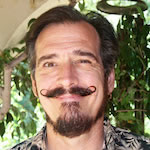 As the founder of Structures Design-Build and Passiv Science, an award-winning leader in low-energy design-build solutions, Cohen has reviewed more than 40 US Department of Energy grants in thermal envelope design and was recently tapped to perform a Passive House analysis of the Bullitt Center in Seattle. He is currently working on several housing and commercial buildings, including the nation’s first Passive House-certified animal clinic. Cohen looks back at why he became interested in low-energy building and what sets his projects apart.
As the founder of Structures Design-Build and Passiv Science, an award-winning leader in low-energy design-build solutions, Cohen has reviewed more than 40 US Department of Energy grants in thermal envelope design and was recently tapped to perform a Passive House analysis of the Bullitt Center in Seattle. He is currently working on several housing and commercial buildings, including the nation’s first Passive House-certified animal clinic. Cohen looks back at why he became interested in low-energy building and what sets his projects apart.
The Q&A begins below. Go inside one of Cohen’s projects here.
Why did you become interested in the Passive House building standard?
When my son was 12 years old, we were sitting at the dinner table, and he told me that at school they’d been learning about carbon footprint, global warming, and climate change. He said, ‘Dad, how long have people known about this?’ I said that in the 1960s and ’70s, we weren’t talking about climate change, but we were talking about our impact on the environment and ecology. And he looked at me and said, ‘Forty years, and nobody’s done anything?’
I came out of college knowing I wanted to build cost-effective, low-energy buildings. Like many people, I couldn’t make a living at it. Nobody was interested in what I was selling. I ended up selling out, honestly, and went to a company where I built whatever somebody would pay me to build. I feel I made some mistakes, and when my son asked me innocently about it, I had to face that.
I searched around to see what I could do, and I discovered Passive House. I had done some super-insulation in the 1980s, and I wasn’t happy with the results, but when I saw Passive House, I thought, Wow, they’ve figured it out.
How does your work stand out in the market?
What I do is really not that different than how we’ve built before, in terms of end product. The difference is how I do it. My passion is commercial buildings. Most North American Passive House folks have focused on residential building, and residential is the hardest thing you can do. As buildings get larger, they should get simpler and cheaper.
One of the things that’s really frustrating for me is that I’ve got a very simple set of ways to make Passive House work. We can deliver nearly any project affordably, but most people don’t know that this is even an option. Getting the word out is the hardest part.
What are some of your most notable Passive House projects?
My best Passive [House] project to date is the dental clinic [in Roanoke]. We do prototypes for buildings with very high process loads because you can’t get the energy low enough on something with a laboratory, or a grocery store, for Passive House. So you do a best-case scenario using a prototype, and we did a dental clinic as a prototype.
One of the specialties of my firm is dental clinics. We’ve done 10 in the last 12 years, every one at $150 to $200 per square foot. The Passive House clinic was $155 per square foot—the low end of market rate—with 68 percent in energy savings.
When we finished the first year of monitoring, we asked the dentists if it made them happy to save $700 per month on energy bills. They said, ‘Yes, but what makes us really happy is that it doesn’t smell like a dental clinic.’ I was particularly happy with that, too.

